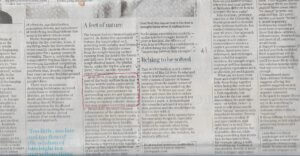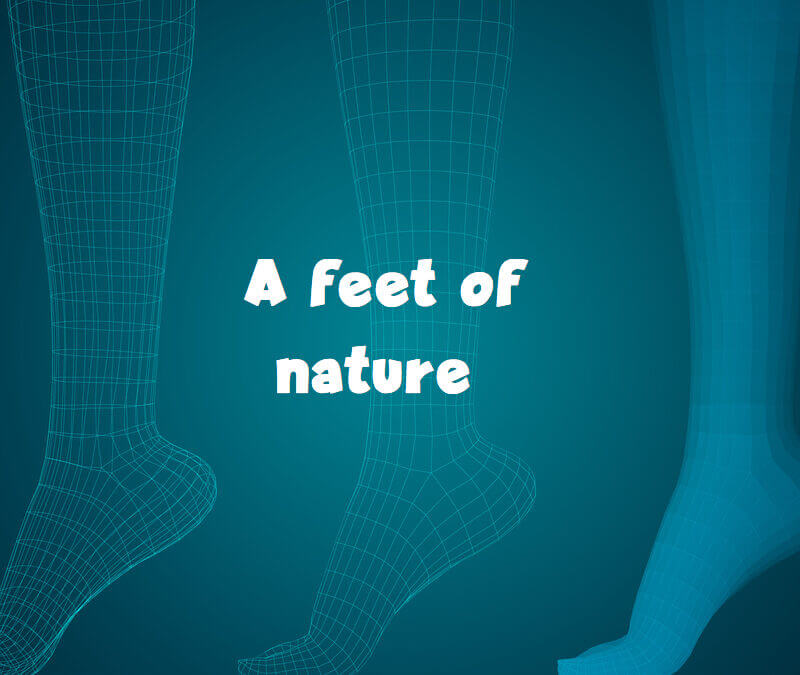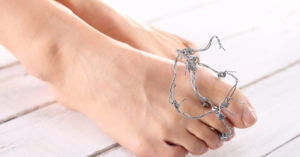Feet their nature and what they do
Welcome to ‘A Feet of Nature’ and my take on James Le Fanu’s Daily Telegraph article
The subject of feet is seldom discussed as a health issue in newspaper columns. If feet are the narrative, discussion tends to lean toward the cosmetic, smells or footwear.
My quest is three fold.
Is the information helpful, is it accurate and are the references reliable?
There is a natural bias toward the female audience but in truth men suffer as much as women. Elsewhere feet are discussed alongside adverts. These are paid for by agents to promote some device or even a surgical technique as part of an advert. The real concern lies with what to trust, what to believe and what to take seriously. I considered this in an earlier article called accessing the internet a problem? This article reading score = 59

Alexey Rotanov / Shutterstock
Dr Le Fanu’s column
Dr Le Fanu wrote a piece for readers on 15th June (2020) in his Doctor’s Diary. As a health journalist it is in my nature to explore narratives written by others where they may not be dedicated to foot health science, or where I see misleading information.

Seasontime/Shutterstock covering feet their nature and what they do
Le Fanu starts off by saying that human feet are a marvel. His use of the terms stability and forward propulsion are key to its’ working features. The adjunctive terminology associated with levers gives a useful hint that he is linking physics to biological structures which then justifies the use of the word ‘biomechanics’. While there is a natural tendency to highlight problems such as plantar fascia, this condition is never far from most runner’s enquiring tongues. And so feet associated with the features of elasticity, mobility and shock absorption become a vital ingredient in the process of normal foot function.
Too much or too little information?

file404/Shutterstock
Le Fanu uses about 230 words in this article. To the general reader this is probable more than enough. If I was a runner I would want more but as a professional I would want a full paper with references and a list of multi-authors to bring their full knowledge into focus. Additionally a little bit of data and patient sampling would look good. But, no, this is a skate through and jolly good it is too. My aim is to cover this article in a little more detail but under 1200 words.
Feet are not relegated to beautification in his article a ‘Feet of Nature’ but have mechanical components providing the power to move the body smoothly across ground. He does not stint when mentioning inflamed tissues and that stretching of the band we call the fascia can help inflammation. Indeed I can shine a little more on the subject of stretching haven written an article on this subject after my January visit to the NEC and the National Sports Exhibition. Le Fanu again is spot on when suggesting there is evidence that stretching is better than rest, ice (cold), medication. His reference is Rathleff and so it is worth taking a look at this suggestion. As a place to start the article is full of information although is reasonably technical. As a 2014 paper it carries references which are older than the paper itself and research moves on at a pace. Old papers however can still be valid if principles have not changed.
A Hidden nugget.
As I read A Feet of Nature, the paragraph sandwiched between ‘Covid-19 and the wisdom of hindsight’ and ‘itching of the eye’, my vision caught the central paragraph of Le Fanu’s column.

Dr James Le Fanu’s article A Feet of Nature. Central paragraph hidden treasure?
Jumped out of the page!
The paragraph jumped out of the page because it had a disconnect with the rest of the article. But on second glance it was far from disconnected. The real truth behind this ‘feet of nature’ fact was that it was more relevant than any reader could realise. Sitting in the middle of a health column was the most valuable piece of information that any podiatrist or foot doctor could impart to his or her patient. So important do I consider the text I have copied Dr James Le Fanu’s words with full accreditation.
As so often, it is only when some part of the body malfunctions that it’s true worth its true worth can be appreciated. The loss of flexibility of the big toe, hallux rigidus, puts puts pressure on surrounding muscles and ligaments that become painful and inflamed, painful and inflamed, causing secondary arthritic changes that may require corrective surgery.
Confusion around the big toe’s loss of flexibility
The big toe or hallux as we call it in medical jargon becomes stiff and so the rigidus is self explanatory. But the loss of flexibility does not have to be associated with arthritis, a condition of joint and cartilage degeneration. The part that makes less direct sense is pressure on surrounding muscles and ligaments. We need to split the stiff toe into two components.
Toe stiffness due to –
(a) damage and toe stiffness (arthritis)
(b) surrounding muscles and ligaments (spasm)
If a joint is damaged internally, the surrounding soft tissues (muscle and ligaments) will tighten through lack of use. It is the second part that is of interest. The toe joint stiffens because the soft tissues become inflamed. This is a protective mechanism. The fact of the matter is that in plantar fascia this specific part of the anatomy can become involved in partnership with the tightening that takes place. The joint may be inflamed but without degeneration and will settle in time. Examining the first toe with active plantar fasciitis (inflammation of the plantar fascia).
How do we know this?

Local anaesthetic delivered in an around the toe joint
Well we can place some numbing anaesthetic in the area so the soft tissues relax and the joint us shown to move. The indicates condition (b). If movement does not arise then the chance it is condition (a) which may be further evidenced by an x-ray picture.
Reflection
This is a good article and I congratulate Dr Le Fanu in his understanding of the foot. While brief as expected from an experienced medical journalist it does contain a clear explanation. References are available and the information is all there together with that hidden gem that can be teased out, but probably only if you have professional experience.
Dr Le Fanu’s series of articles are covered under the heading, ‘The Surgery’ in the Daily Telegraph as regular features on health.

David Tollafield is a former consultant podiatric surgeon. Having retired from seeing patients he now writes on health matters and feet. Bringing quality and accurate information to patients and supporting podiatry are his aims. To date he has published seven books on the subject of foot health and contributed widely to scientific journals on foot health and science.
ConsultingFootPain is part of Busypencilcase Reflective Communications
Est. 2015

Published July 2020


Recent Comments